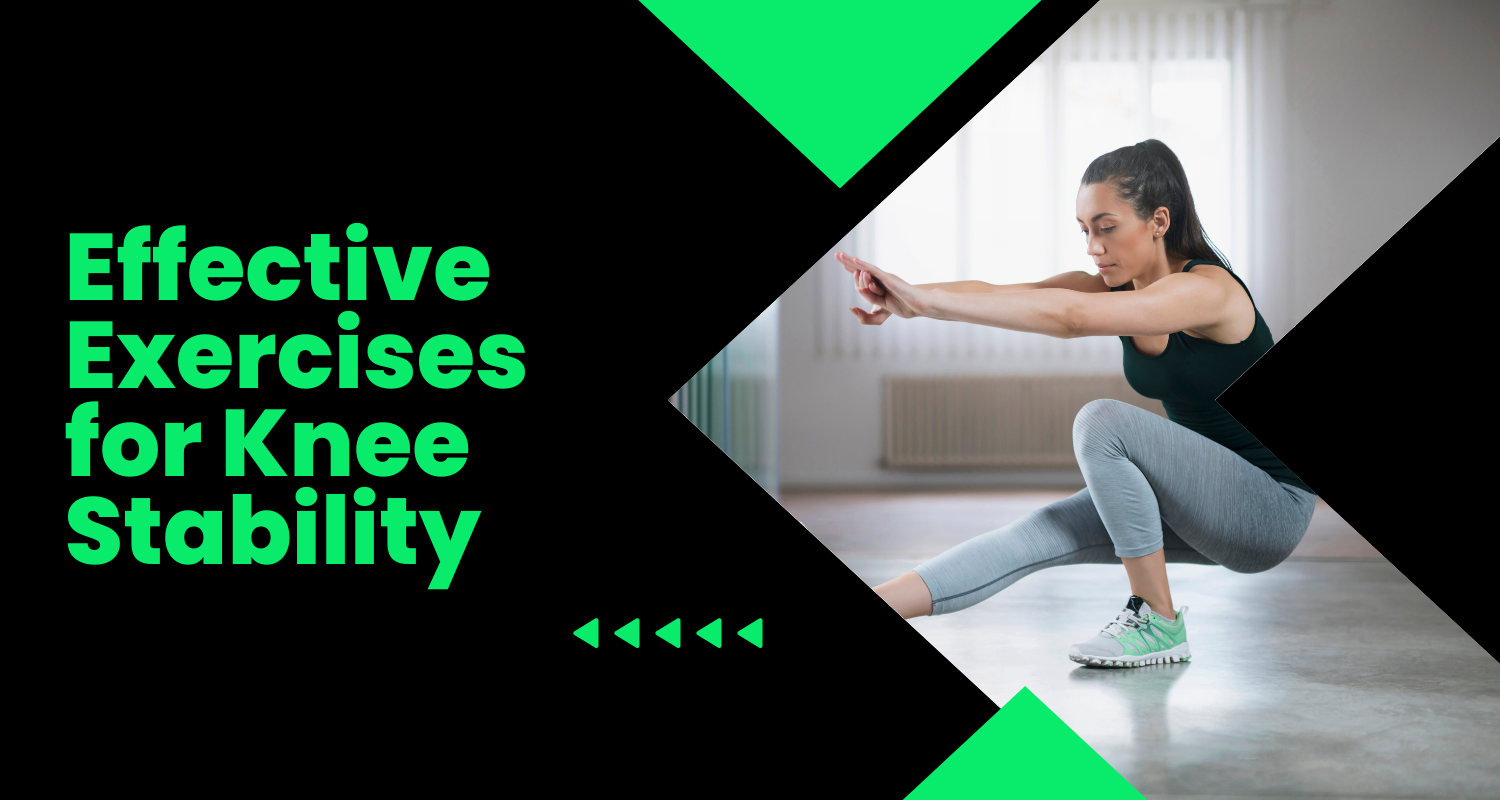Enhance Knee Stability with Effective Exercises

Maintaining knee stability is crucial for overall joint health and functionality, particularly for individuals engaged in physical activities or sports.
Knee stability exercises play a vital role in strengthening the muscles around the knee joint, reducing the risk of injuries and enhancing performance.
In this article, we'll explore the importance of knee stability, common causes of knee instability, and the best exercises to promote knee strength and stability.
Importance of Knee Stability
Knee stability refers to the ability of the knee joint to maintain proper alignment and support during movement.
Strong and stable knees are essential for activities such as walking, running, jumping, and squatting, as they help prevent excessive stress on the joint and reduce the risk of injuries, such as sprains, strains, and tears.
Common Causes of Knee Instability
Several factors can contribute to knee instability, including weak or imbalanced muscles, previous injuries, poor biomechanics, and inadequate proprioception (awareness of body position and movement).
Addressing these factors through targeted exercises can help improve knee stability and reduce the risk of future injuries.
Key Components of Knee Stability Exercises
Effective knee stability exercises typically target the muscles surrounding the knee joint, including the quadriceps, hamstrings, and glutes.
Additionally, exercises that improve balance, proprioception, and neuromuscular control are essential for enhancing overall knee stability and function.
Best Knee Stability Exercises
Quadriceps Strengthening
Exercises such as squats, lunges, and leg presses target the quadriceps muscles, which play a crucial role in knee stability.
Performing these exercises with proper form and control helps build strength and endurance in the quadriceps, improving overall knee stability.
Hamstring Strengthening
Hamstring exercises, including hamstring curls, deadlifts, and Romanian deadlifts, help balance the strength of the muscles around the knee joint.
Strong hamstrings provide stability and support, reducing the risk of anterior knee pain and injuries.
Glute Activation
Exercises that target the glute muscles, such as hip thrusts, bridges, and clamshells, help stabilize the pelvis and improve hip-knee alignment.
Strong glutes contribute to overall lower body stability and reduce stress on the knees during movement.
Balance and Proprioception Exercises
Incorporating balance exercises, such as single-leg stands, stability ball exercises, and Bosu ball exercises, can improve proprioception and neuromuscular control around the knee joint.
These exercises challenge stability and coordination, enhancing overall joint stability and reducing the risk of falls and injuries.
Incorporating Knee Stability Exercises into Your Routine
To reap the benefits of knee stability exercises, it's essential to incorporate them into your regular workout routine.
Aim to perform a variety of exercises targeting different muscle groups and movement patterns, and gradually increase intensity and difficulty as your strength and stability improve.
Precautions and Considerations
When performing knee stability exercises, pay attention to proper form and technique to prevent injuries.
Start with light resistance and gradually increase weight and intensity as tolerated.
If you have a history of knee injuries or other health concerns, consult with a healthcare professional or physical therapist before starting a new exercise program.
Conclusion
Enhancing knee stability through targeted exercises is essential for improving joint health, reducing the risk of injuries, and enhancing overall physical performance.
By incorporating exercises that target the quadriceps, hamstrings, glutes, and balance, you can strengthen the muscles around the knee joint and improve stability and function.
Remember to prioritize proper form, progression, and safety when performing knee stability exercises to achieve optimal results.
